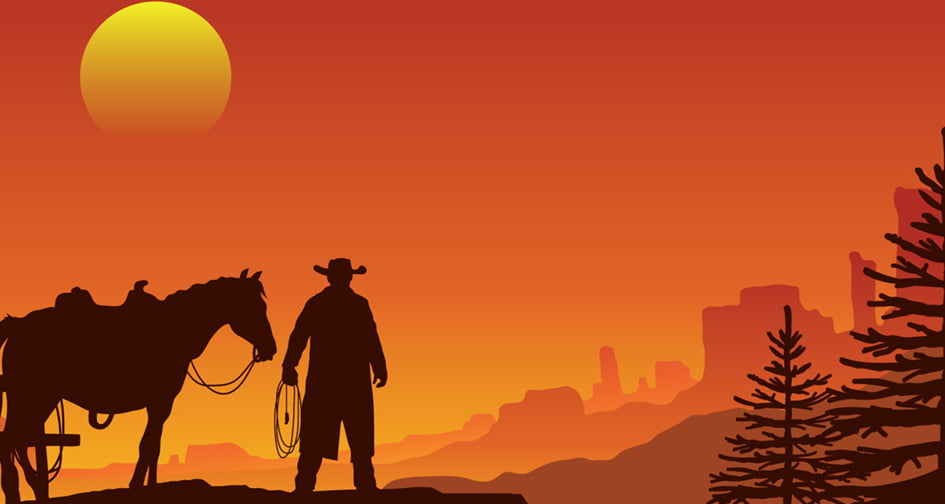The introduction – casinos
A casino is a facility for certain types of gambling. Casinos are often built near or combined with hotels, restaurants, retail shopping, cruise ships, and other tourist attractions. Some casinos are also known for hosting live entertainment, such as stand-up comedy, concerts, and sports.
One popular fact about the wild west is its wildness and lawlessness. This article will particularly centre on the various decades during the 19th century with a focus on gambling. There were some top-class names involved in gambling during this period and in addition, gambling itself evolved from one-roomed places where people would gather to established saloons for gambling where several of the most popular games we play today arose. Stay with us to find out more about the history of casinos in the Wild, Wild West.

Just as a new century sets in, the land was characterized with such setting as little towns which began to spring up. These little towns came with popular gentlemen’s saloons and they offered the three W-vices being “whoring, whiskey, and wagering.” Being the new normal,these saloons served as a popular pastime for many, and for some others, it became a professional calling.
With the establishment of more towns came the opening of more gambling houses. Gambling events during this period were in abundance. One particlar name that gained popularity with this period was Italian immigrant, Charles Cora, who was the foremost faro player on the Mississippi. He was banned from playing at several locations after he broke some banks due to his winnings.

1849-1860: The California Gold Rush
The discovery of gold in California after several decades led to this particular gold rush. This massive rush attracted many Mississippi River town gamblers to San Francisco. It was several years later that centre of the city at Portsmouth Square was surrounded by large gambling houses. Reports indicate that the “doors never closed and enormous sums changed hands over the tables.”
Examples of establishments which sprung up during this period include the following. First, there was the Parker House which was originally intended to be a hotel but was eventually converted to a casino as more and more gamblers flocked to San Francisco. This casino establishment consisted of a single room that had three tables for faro, two for monte, one for roulette, and a further table for other games. Gamblers who wished to enjoy the services here would pay around $10,000 per month for conducting their games in this room. Smaller rooms were charged out at $3,500 per month. It is also said that an individual rented the entire second floor for $60,000 and refurbished the rooms, making them appropriate for gambling. Estimations indicate that at the peak of the California Gold Rush, more than half a million dollars would trade hands at the Parker House on any given day.
The gambling establishment in San Francisco was not limited to Bur Parker House, It was surrounded by several others, which were of French origin. As is commonly believed, the popularity of gambling in France led to its inception in the United States. Many gambling houses operated under the influence of the French. Some examples of gambling houses that neighboured the Parker House were the Aguila de Oro, The Varsouvienne, the Mazourka, La Souciedad and the Rendezvous, amongst others.
As an outgrowth of the mining camps that sprung up followed the gamblers. Cities such as Sacramento, Nevada City, and other Sierra towns were full of miners who loved games of chance and wanted a stake in a pot of winnings. A pair of famous individuals during this period were Cora and Bryant. Cora, although a gambler, was hung for the murder or a US Marshal in May 1856. Bryant, on the other hand, was much more successful. He established the Bryant House and “soon became one of the most prosperous and influential men in San Francisco.” He eventually moved south and made more money, although he too suffered a terrible fate and was shot dead in 1968.
1860s: Mining Fever and the Transcontinental Railroad
The Virgina city became a prominent centre for gambling in the 1860s. Its prominence is traceable to all the mining excitement in Nevada. Just like in San Francisco, gambling houses dominated the main streets of the new towns.” A survey indicated that the town had 18,000 residents and a gambling house for every 150 of these, meaning there were so many gambling houses. And which of these were the most popular during this period? First, there was the Gentry and Crittenden Gambling Saloon which mainly feature a no-limit faro table.
In addition to these gambling houses, you would also see Tom Peasley’s Sazarac, the Delta Saloon, and Sawdust Corner. Important players who did pretty well during this period and at these tables were James ‘Kettle Belly’ Brown, Matt Redding, Jesse Bright, Gus Botto, Billy Dormer, Tom Diamond. Miles Goodman, Joe Dixon, Ramon Montenegro, Grant Isrial, and Joe Stewart. Other popular towns during this period were Gold Hill and Carson City.
Another important event apart from the gold rush was the establishment of the trans-continental railroad. It created small towns full of gamblers and players who played for sport. As newer towns became established, these dregs of society would ultimately pack their bags and move on to the next town, plying their trade.
1870s: The Trail Drives and the Cow Towns
The advent of of the “great trail drives of Texas Longhorns to the Kansas railheads” brought the establishment of the “cow towns” in the decade of the 1970s. These towns were Abilene, Newton, Wichita, Ellsworth, and Dodge City. Each of these became gambling centres during their early days. There were many professional gamblers who are associated with this area and this period in time, one prominent example being ‘Wild Bill’ Hickok. With the advent of more ore strikes and the establishment of additional mining districts, new boomtowns quickly emerged. These towns were Deadwood (Dakota Territory), Leadville (Colorado), and Tombstone (southern Arizona Territory).
Deadwood earned popularity because Wild Bill’ Hickok was shot to death there, while holding the ‘Dead Man’s Hand’ – being aces and eights – becoming a legend to this day. Leadville, on the other hand, had more than 150 resorts which ranged from small saloons to elaborate theatres and concert halls. A popular destination in this city at the time was Tom Kemp’s Dance and Gambling Hall. Finally, Tombstone “blossomed into a major city in the Arizona desert almost overnight and attracted many prominent professional gamblers.”
1880s and 1890s: Gambling Flourishes
The 1880s saw the growth of great cities in the West. With this came the growth of “gambling emporiums.” Returning back to San Francisco, which was a popular hotspot during the gold rush, the Barbary Coast was a famous establishment that was considered a “sin centre of worldwide notoriety.” Other cities that were famous for gambling during this period were Denver, Kansas City, Omaha, Tucson, Hot Springs, Ark, and the Texas cities of Austin, San Antonio, Fort Worth, and Dallas. It was during this period also that saw the development of the Gamblers’ Circuit which was essentially a group of gamblers travelling around the country in pursuit of fortunes through the game of chance.
The following century saw the discovery of gold in the Klondike region of Canada’s Yukon, leading to another gold rush. As was the situation in previous decades, miners were followed by crowds of sportsmen looking for their fortunes. This led to the establishment of saloons, brothels, and gambling houses. A popular establishment during this period was the Dexter Saloon, which was run by Wyatt Earp and Charlie Hoxie.
Conclusion
In the Wild West, casinos were incredibly popular, the games were different, and the players oftentimes, do not mind paying the house to run the games themselves. Eventually, the Old West died a quick death, but for a while, the frontier was the home to all kinds of rough and rowdy sinning. Gambling was just part of it.Some of that atmosphere lives on, especially in some of the more traditional casinos in Nevada. But one thing’s for sure—they didn’t have slot machines in Old West gambling halls.
The great age of Western gambling ended with the closing of the frontier and the rise of antisaloon and woman suffrage reform movements that swept across the nation in the first decades of the 20th century. These led inevitably to constitutional amendments prohibiting the manufacture and sale of alcoholic beverages and establishing the enfranchisement of women. State after state passed legislation outlawing casino gambling. Nevada alone bucked the tide. Casino gambling returned in the latter half of the 20th century on Indian reservations and in Las Vegas, a city devoted to gambling.




